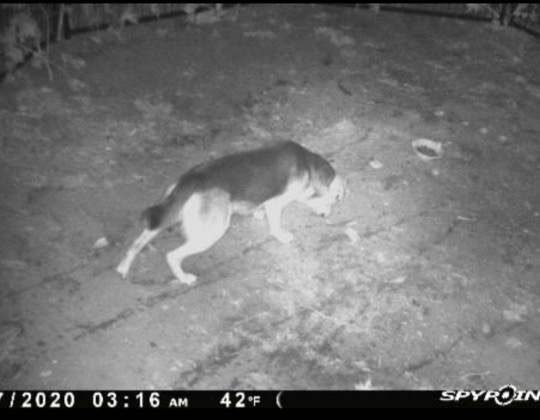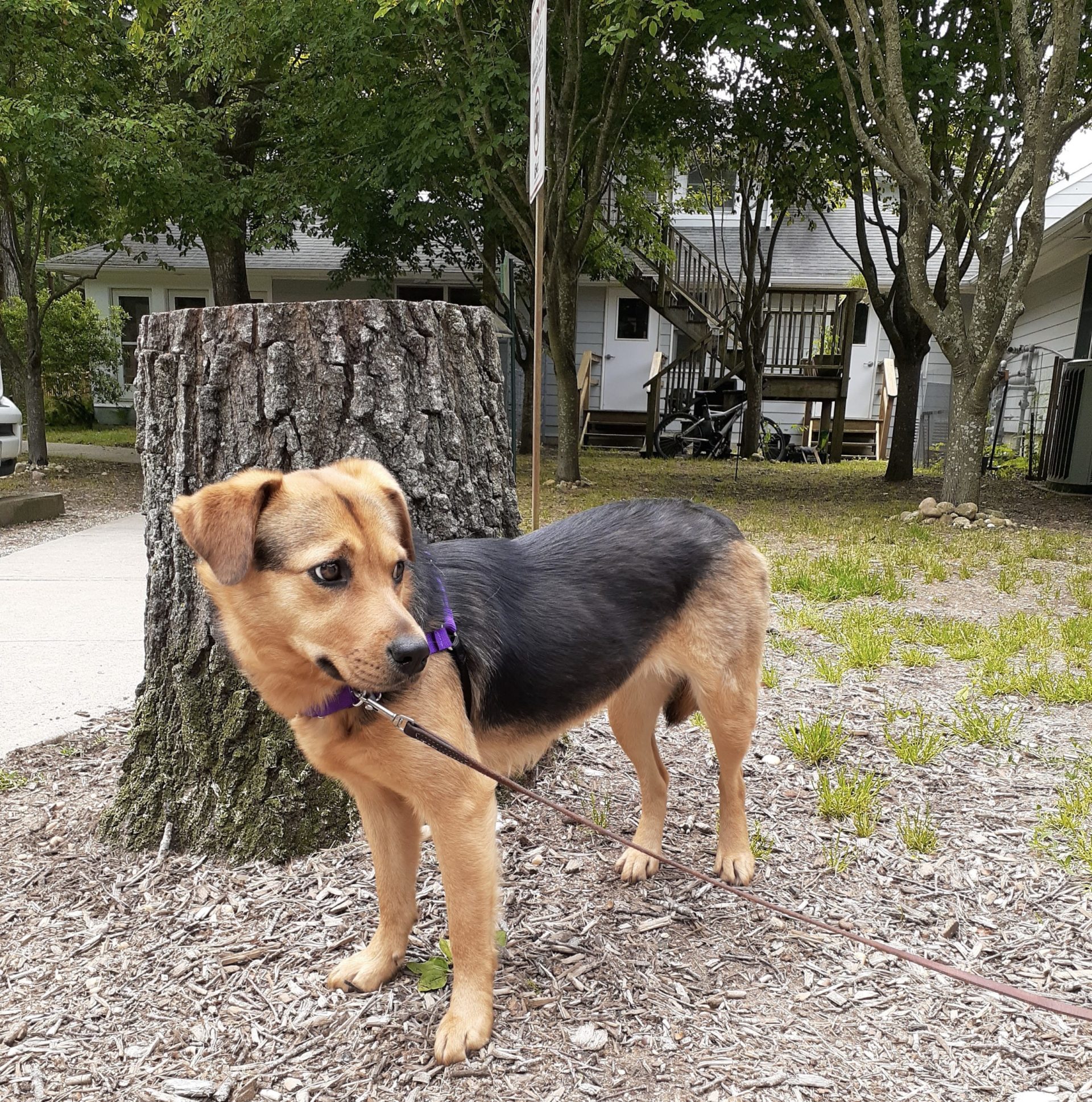Dog Found After Two Months On The Run In Sag Harbor


Back on April 15, Minnie and her owner were out for a walk at Long Beach when the skittish dog was spooked by a hang-glider. She slipped out of her collar and, in the commotion, her owner fell and broke her hip in three spots. Bystanders tried to grab Minnie, but she ran off.
For nearly two months, the year-and-a-half old beagle/German Shepherd mix ran loose in the woods between Noyac and Sag Harbor Village, evading capture, even from an experienced trapper.
Teddy Henn, a dog detective of sorts, started searching for Minnie the very night she went missing. Henn is with Long Island Dog Search and Rescue, based in Sayville, and Carol Holley, a Sag Harbor woman whose dog he found after 18 days this winter called him in for this new mission. Holley put Henn in touch with Arline Blake, who was Minnie’s dog walker and helped look for her every day.
“She certainly gave us the run-around,” Henn said of Minnie. Through the nearly eight-week ordeal, there were rarely any in-person sightings of Minnie, despite the many flyers circulated.
Henn uses a highly-trained tracking dog, a drone with a zoom-in camera, and trail cameras that send alerts to his cellphone to find lost dogs. He placed the bowls Minnie had used in the woods under cameras and put out the food and a scent—”like a western BBQ,” he said—at lure her out.
Soon, he had hundreds of pictures of her from the cameras. “I’ve got videos of her. She was so skittish that if a leaf blew, she would jump 20 feet in the blink of an eye. I knew she was going to be extremely hard to catch, the way her behavior was,” he said.
Minnie, approximately 41 pounds, had grown up in the woods in South Carolina, was rescued and ended up at the Animal Rescue Fund of the Hamptons in Wainscott, where she was adopted out about six months ago. But she remained very feral.
She was even scared of her own bowls. With her tail tucked between her legs, she would walk around them, then disappear. One night, she came back doing “a belly crawl-up to the bowl with her back legs stretched out,” before grabbing a piece of kibble and then darting away, Henn recalled.
He thought, “Oh my God, how am I going to get this dog in a trap? She’s scared of a bowl!”
When he moved on to setting up box traps with the bowls of food to coax her out, she would come by, but just never would go inside the trap. So he changed the style of trap and camouflaged it to look like a bush with an opening. “She went halfway and took food. If she took one more step, the door would have closed and she would have been caught,” he said.

Minnie disappeared from the cameras’ views again, so he set up another feeding station in a different location, hoping the change in the environment would work. It didn’t.
Henn decided to try a kennel trap, much larger than the box traps at about 6 feet high, 10 feet deep and 5 feet wide. She stuck her face in the trap but would not step into it. This went on for a week to nine days, he recalled.
She seemed to only come out at night, visiting the feeding station between midnight and 4;30 AM. “She hid in the thickest, thickest of woods, where a squirrel would have a hard time getting in,” he said.
Henn took the panels off of the trap, replacing them one by one as Minnie got more comfortable with stepping into the trap’s confines. After he assembled the final part with the door, “She looked at it for a half-hour, then walked in and ate the food six minutes,” while he watched it live on his phone. Finally, she went all the way. A silent laser beam is set up to trigger the door to close when the dog steps across the light.
“Then all of a sudden, as the door was closing, she darted out like a bullet. The door closed behind her as she got out. It was heartbreaking,” he said. “She beat the door by three feet.”
The sound of the door closing only made her more fearful. She never returned there. In a different place, Henn set up a smörgåsbord of food—bacon, hot dogs, liverwurst, rotisserie chicken—and that enticed her back out of hiding. “She had a delicious meal and then she walked away and she ate. I figured the next night she would be back for sure,” he said, but the next night he heard, though the camera, fireworks go off in the area, and that was it.
Minnie was not spotted again for 17 days.
Every day, Henn walked up every trail he could find, looking for her paw prints or any sign of her. He was convinced the fireworks had scared her off and she had now run to the woods on the either side of the road near Oakland Cemetery.
He decided to set up some cameras in the area and just as he pulled onto Jermain Avenue, he received a call from a woman who said she had spotted Minnie in the cemetery. He found the caller, who pointed out where Minnie was. He carefully and quietly got out of his car with a Snappy Snare, used to catch animals, and a bowl of food.
“I think if she had seen me, she would have bolted out of there,” he said.
Blake also happened to be nearby. She approached Minnie with her collar and leash, lowered herself to the ground and, in a happy tone, called out, “Minnie! Minnie Moo!”
“Minnie looked at her and stopped the pacing,” Henn said.
Blake said it was clear Minnie recognized her. For about a half-hour she spoke to Minnie, slowly approaching her. She worked her way closer and closer, with Henn watching through the bushes. As soon as Blake grabbed Minnie, Henn put the snare on the dog.
After 59 days, “Finally, it was over,” Henn said.

For now, Minnie is back at ARF Hamptons while her owner recuperates. “Minnie’s story is an example of a community of concerned friends and neighbors coming together,” said Scott Howe, the executive director at ARF. “Their efforts, combined with patience and generosity of Teddy Henn, brought Minnie to safety.
Howe said that as GPS collars become more efficient, with a longer battery life, anyone with a shy or fearful dog, or one that likes to roam, should consider them, he said. “Accidents happen, both at home and on walks, and a GPS collar in addition to a registered microchip, can offer extra peace of mind.”



